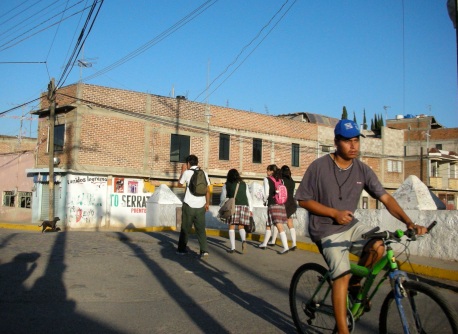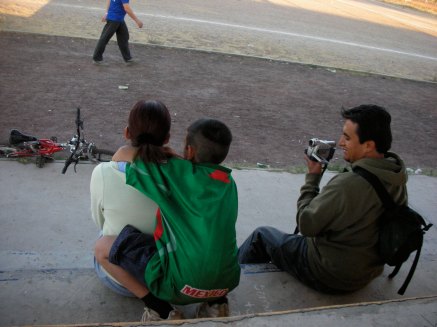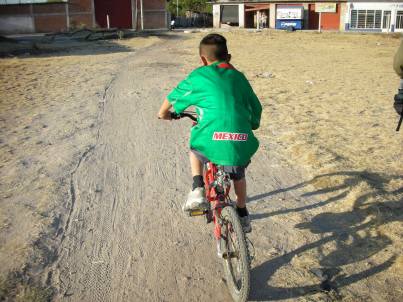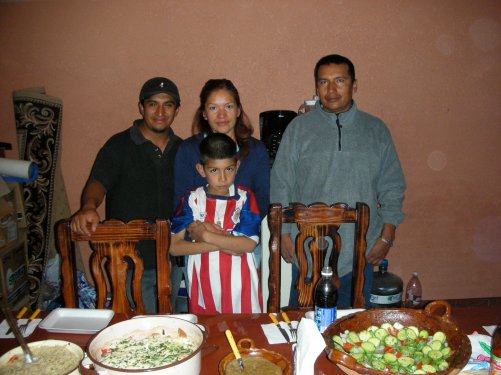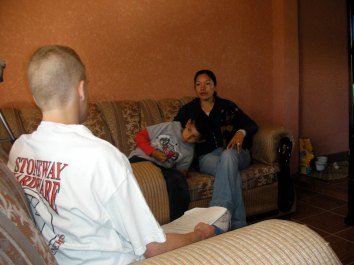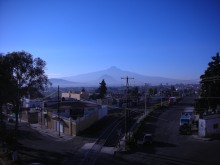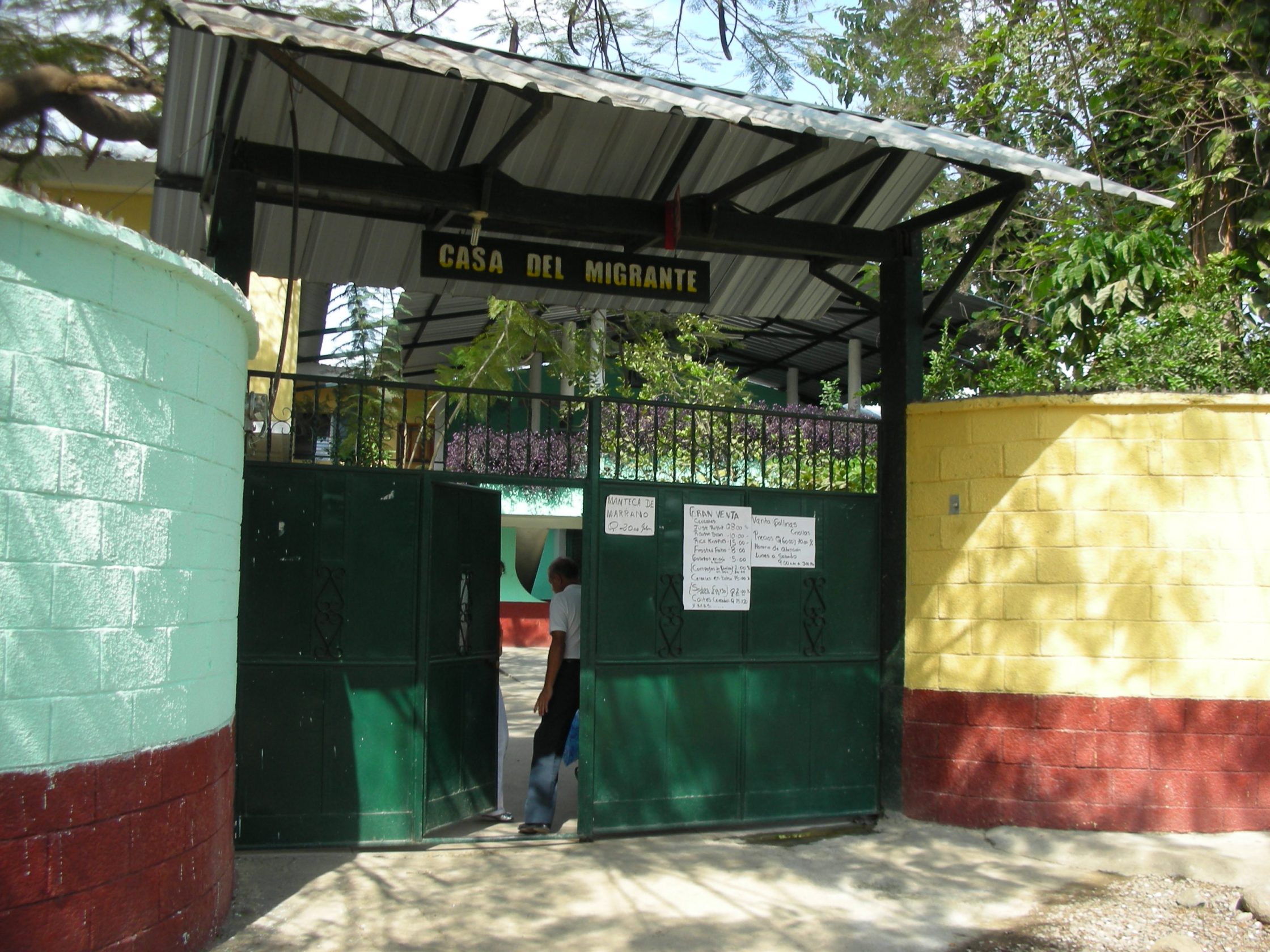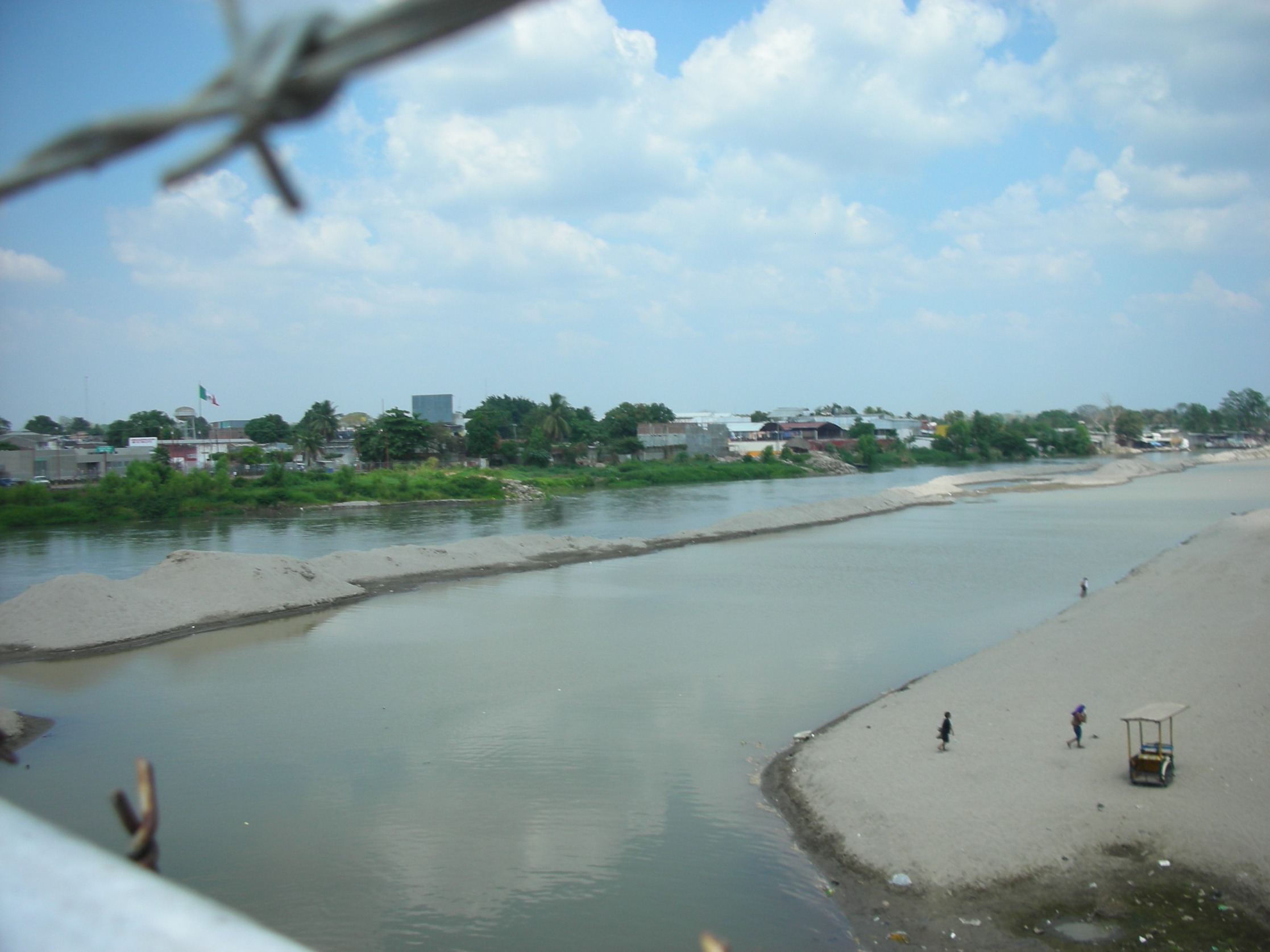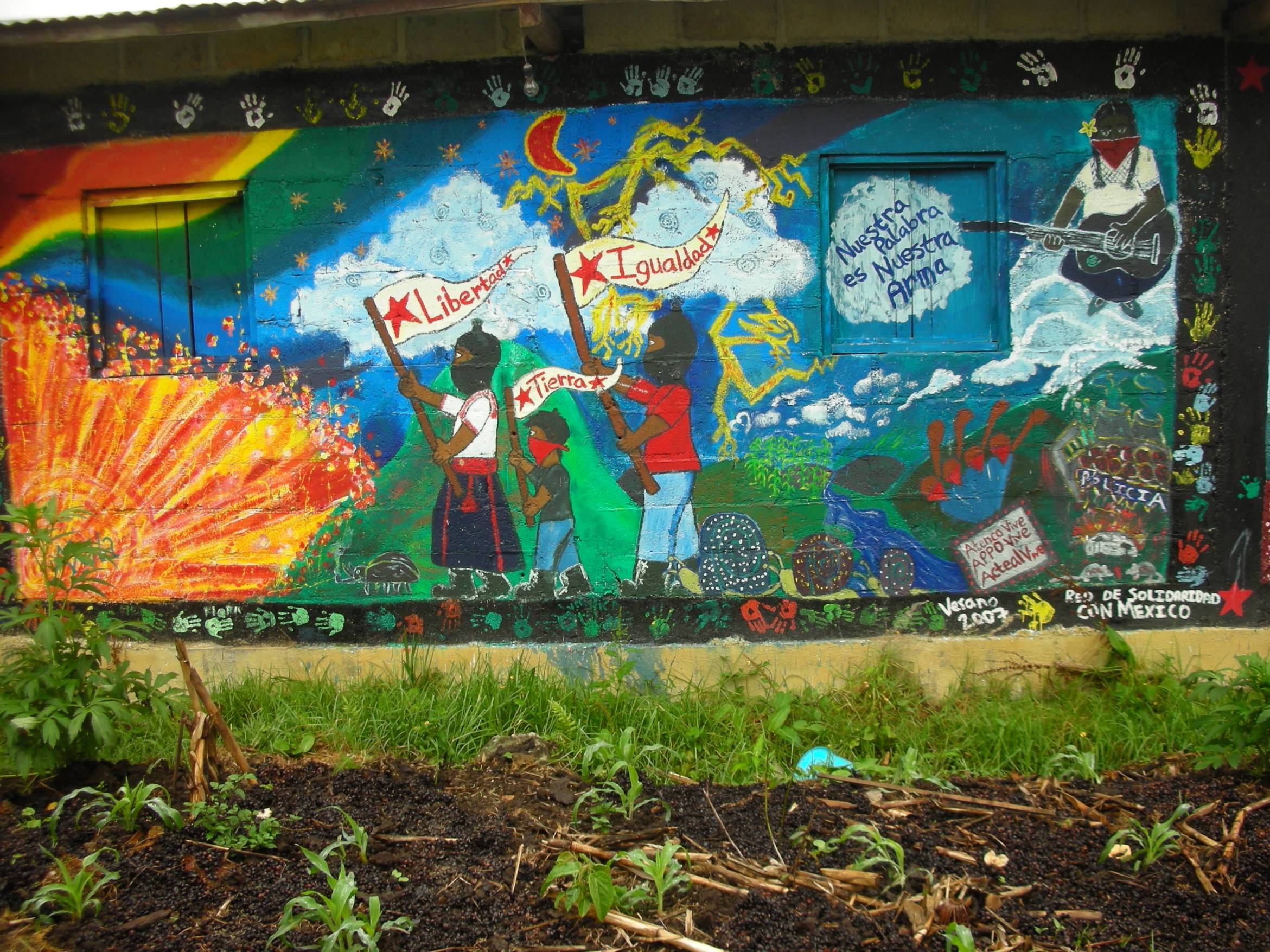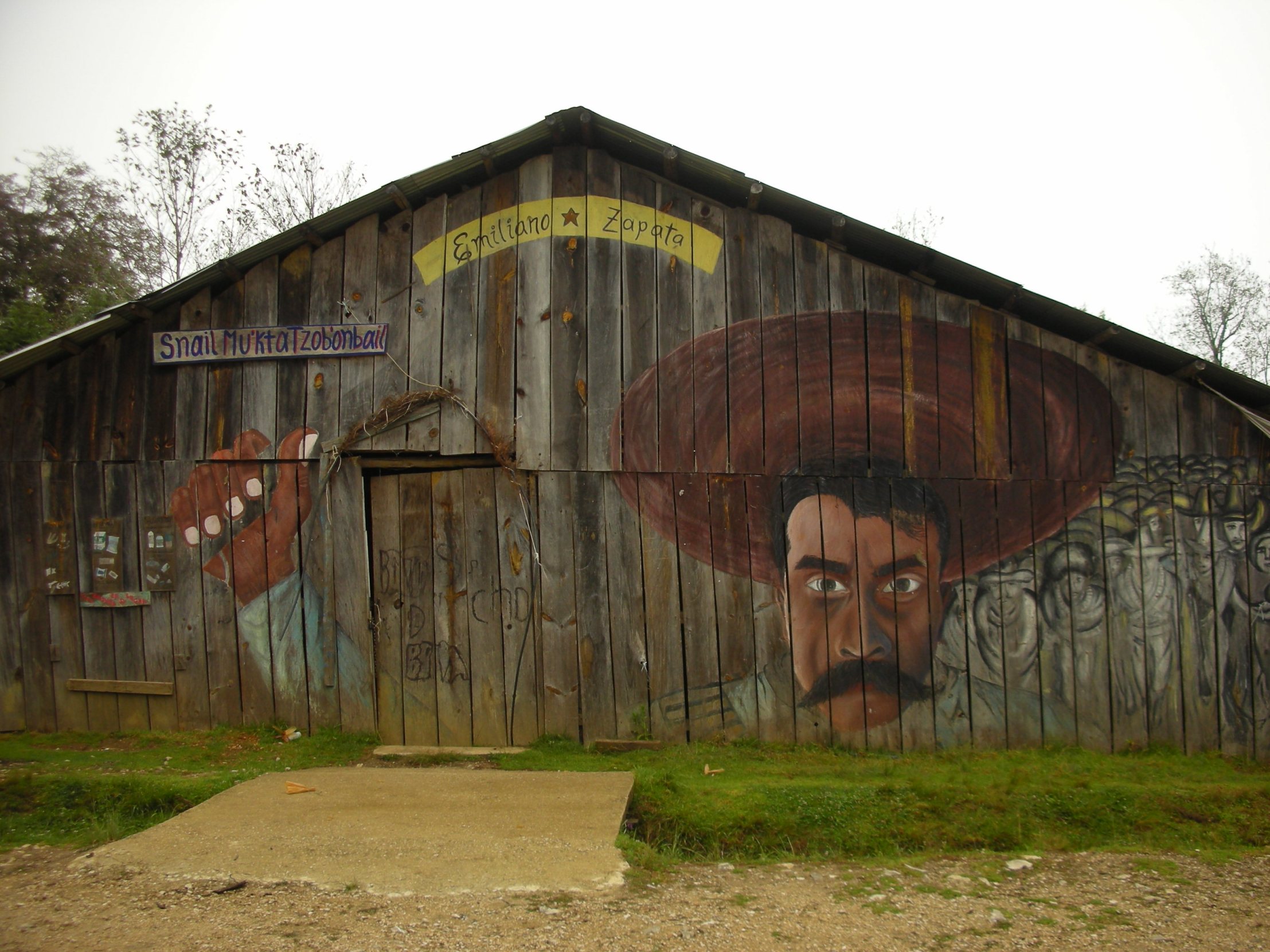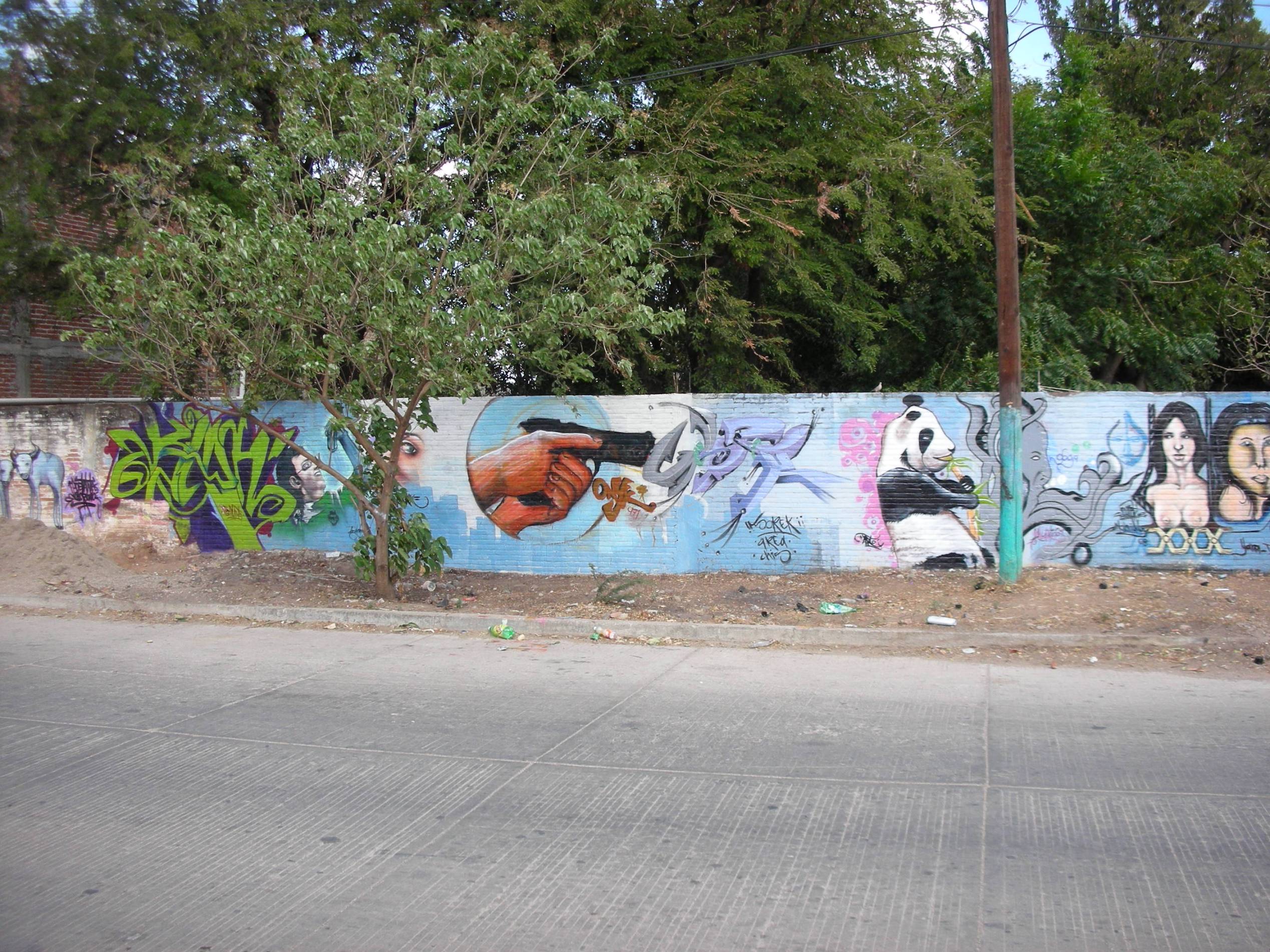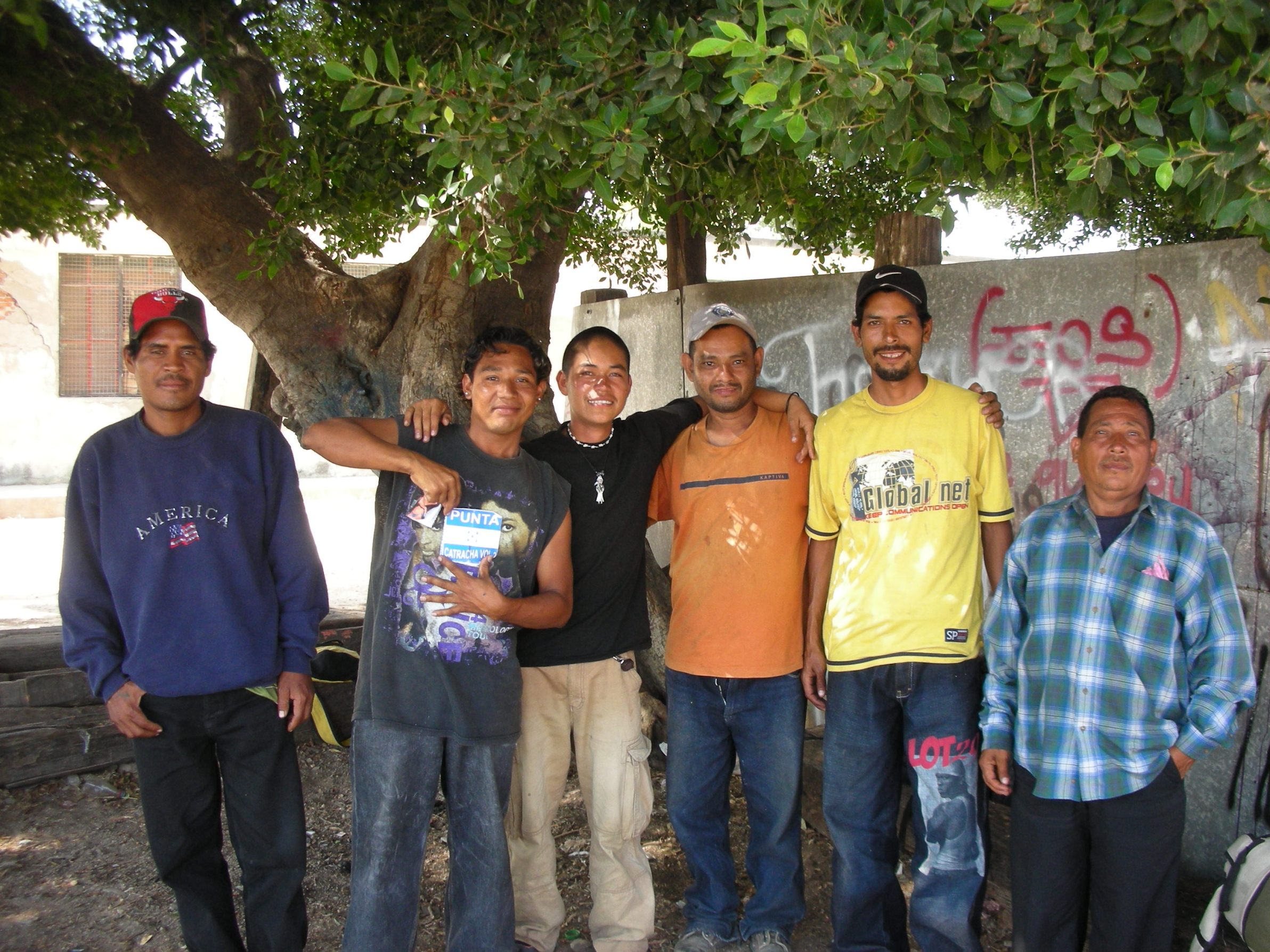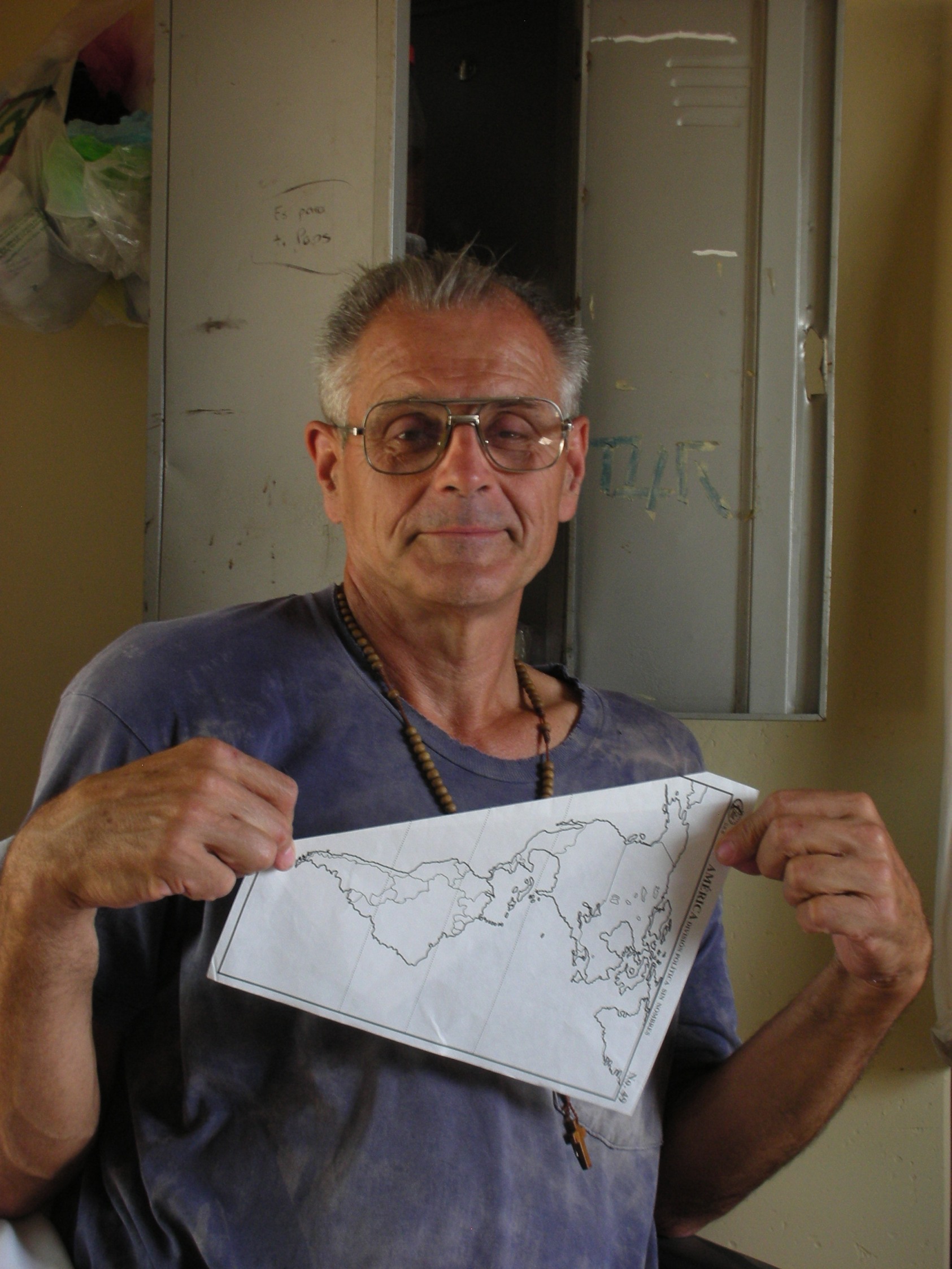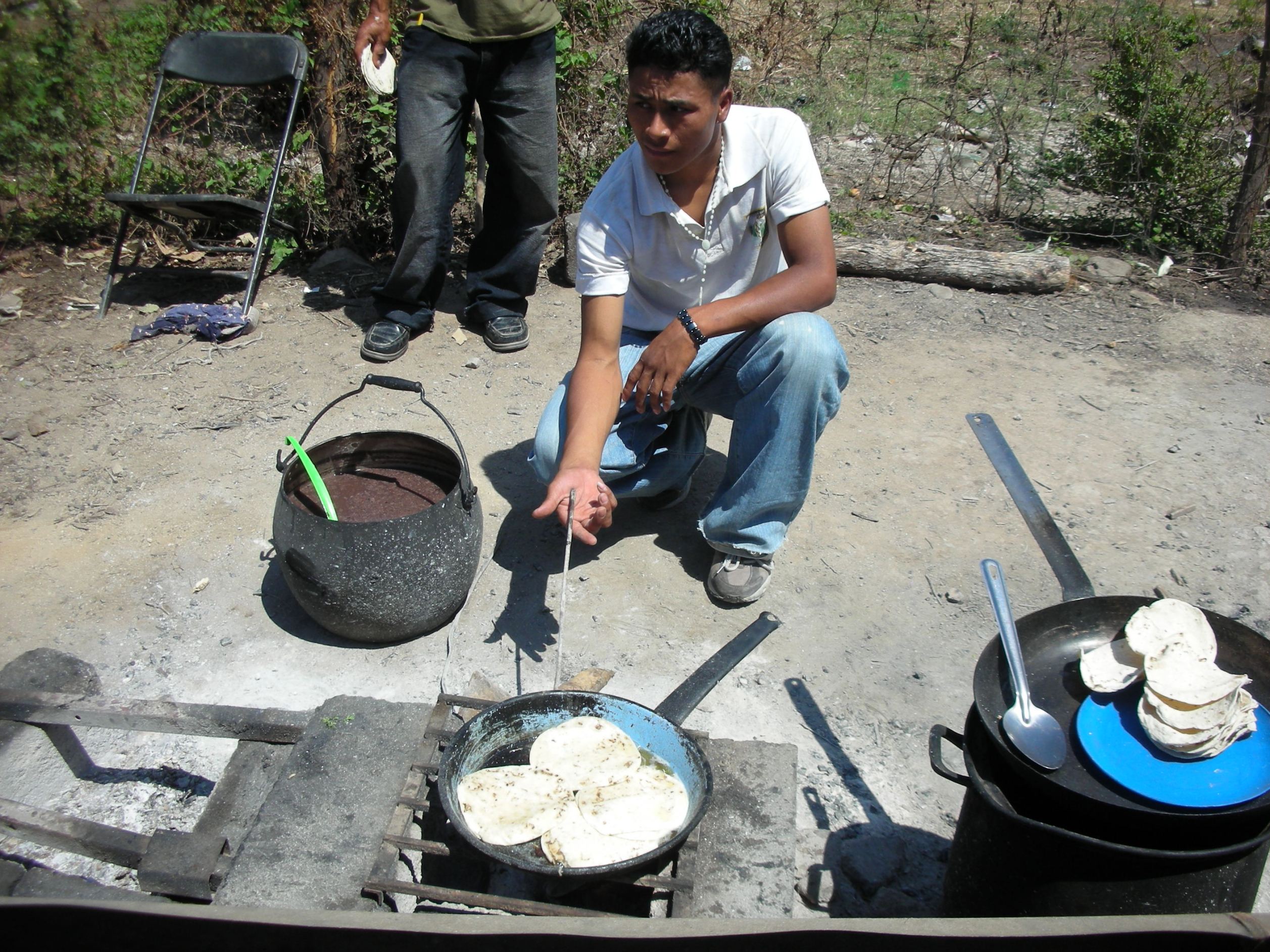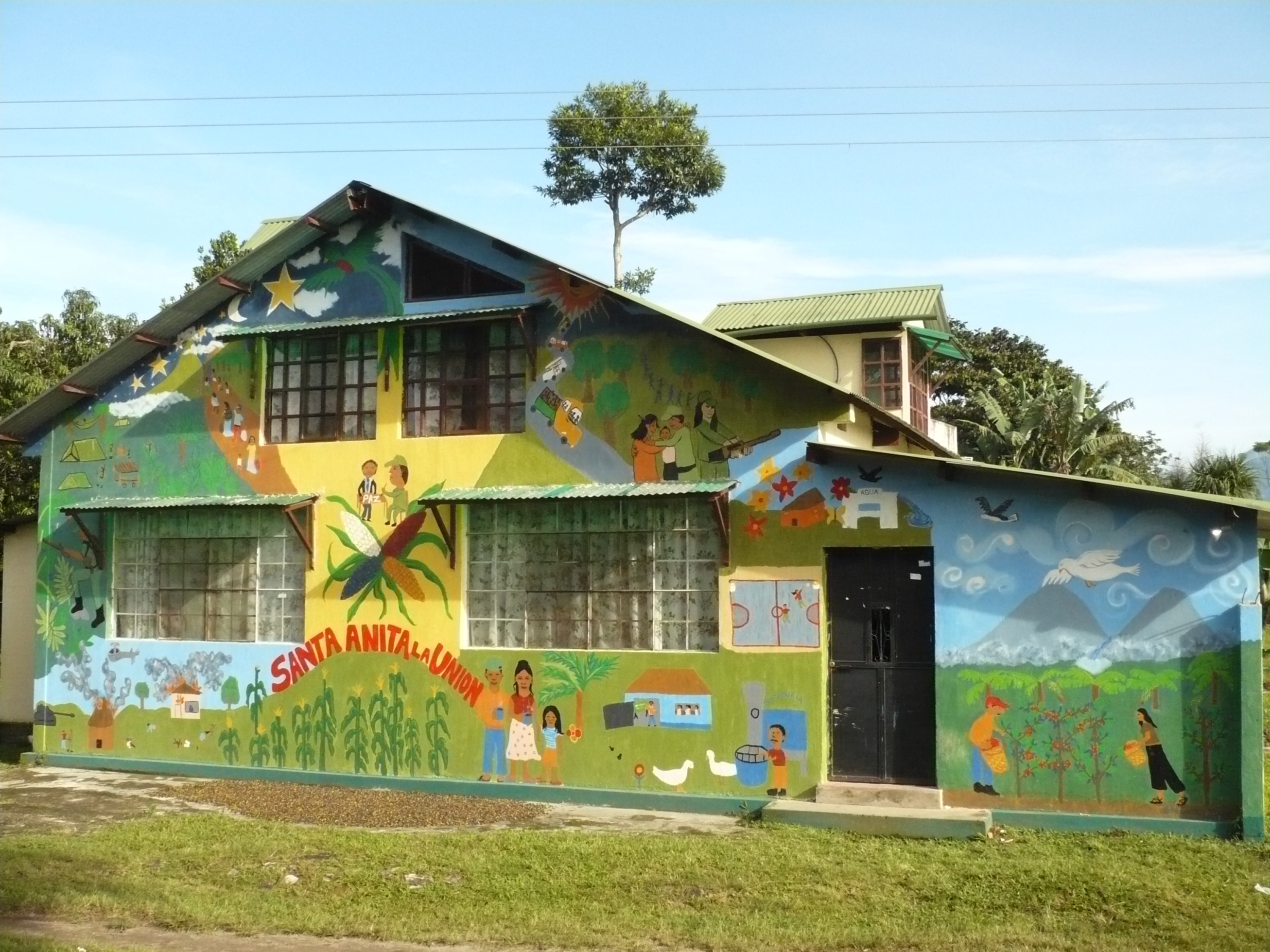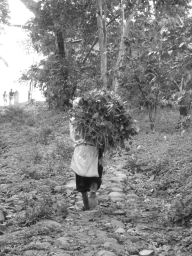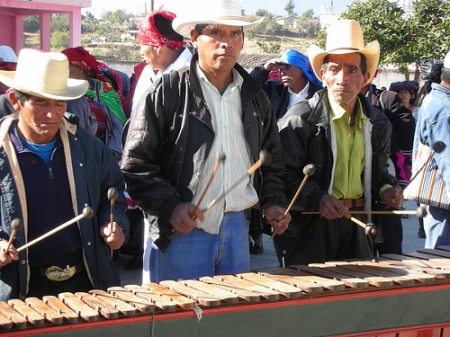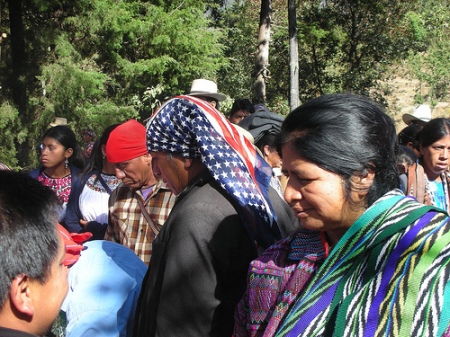Nuestro trayecto por México continúa en un torrente de diversas interacciones con mucho que aprender y discutir. En cuanto a nuestro blog, queremos empezar a darles a nuestros lectores (aquellos que están empezando el aprendizaje de estos temas) información general de lo que exactamente son las causas y efectos de la migración y la situación de los migrantes hoy en día.
Our journey through Mexico continues to be a whirlwind of diverse interactions with lots of learning and discussion. As far as our blog goes, we want to begin giving our readers (those who are just starting to learn about these issues) a general overview of what exactly are the causes and effects of migration and the situation of migrants today.
La Dificultad de Globalizar la Palabra
Queremos contarles que este blog llega a muchas personas con mucha experiencia en estos temas pero también para muchos que empiezan este aprendizaje. Así que tratar de escribir a diferentes tipos de lectores es una de las tareas más difíciles para crear un balance. No pretendemos saberlo todo. Al contrario, estamos en un proceso de auto-aprendizaje. Les decimos que al escribir estas palabras no estamos tratando de convencer a los convencidos sino a abrir la discusión para darle voz al que no la tiene. Nuestro objetivo en hacer este documental es globalizar la palabra y dar esta información a los que no la han tenido. Esperamos que nos puedan ayudar
Challenges of Globalizing the Word
We would like to share with all of you one of the challenges in writing and maintaining this blog. Although this is being read by many people who already have a lot of experience and knowledge in these issues, it is also being read by people who are new to this information. Thus, it is quite difficult to figure out how to create the balance – so that all of our readers can take something new from this blog. We don’t pretend to know everything. On the contrary, we are in the process of learning ourselves. We do not have the intention of “converting the converted” but rather opening discussion and giving voice to the voiceless. We want to spread this information (what we are learning) and share it with those who haven’t had the opportunity to hear. Our intention, in this documigrante project is to bring this information to those that have never had it. We hope that you can help us.
Globalizacion en relacion a la migracion
Muchos de ustedes están al tanto de las discusiones de una recesión en los Estados Unidos. Aunque el gobierno de los Estados Unidos no lo admite del todo, (muchos expertos y gente común) reconocen que ya ha empezado. Hoy leímos un articulo en La Jornada, periódico de alto prestigio en México, sobre este problema. El articulo menciona que México, Centroamérica y el Caribe serán los mas vulnerables si Estados Unidos entra en una recesión. Los países Centroamericanos dependen no solo de las exportaciones a los Estados Unidos sino también dependen de las remesas de los inmigrantes que viven en los Estados Unidos.
GLOBALIZATION IN RELATION TO MIGRATION
Many of you are aware of the discussion of a recession in the United States. While the current US administration denies the onset of a recession, many people (experts and common folk alike) recognize that it has already started. Today, we read an article in La Jornada, a daily newspaper based out of Mexico City, about this very problem. The article states that Mexico, Central America, and the Caribbean are the most vulnerable foreign areas should the US should go into a recession. This idea is based on a) the fact that most of Mexican and Central American exports are bought by the US and b) the fact that the remesas (money sent home by immigrants) sent home depend on a stable US economy.
Los tratados de libre comercio (TLC), el Plan Puebla Panamá y el ALCA son en si planes económicos en que los pueblos Centroamericanos salen perdiendo y expulsan a la gente del campo a las ciudades y de países pobres a países ricos UN DESPLAZAMIENTO FORZOSO.
The free-trade agreements (TLC), the Plan Puebla Panamá and the ALCA are the economic policies that are causing Central America to loose its people, causing its towns to empty. These agreements cause people from rural areas to emigrate to the cities, people from the poor countries to emigrate to the rich countries, thus being forcefully displaced.
La dependencia de los dólares de los Estados Unidos a los países Centroamericanos les hace hoy en día más débiles ya que los gobiernos no son capaces de generar empleos. Los gobiernos miran con buenos ojos que la gente del sur se vaya a los Estados Unidos y salga de sus comunidades (es la inversión mas barata para el país que después se transforma en divisas).
Central America’s dependence on US dollars is making their countries weaker as their governments are not able to generate substantial employment. The governments look positively at how their people immigrate to the United States leaving their communities (the cheapest investment that an underdeveloped country can make to generate income).
Las compañías multinacionales por otro lado entran a los países a tomar control de las economías y el dinero y les compran con la falsa idea de que generan empleo. Hoy en día se puede ver a las cadenas Wal-Mart desde Cuidad Juárez hasta Managua, Nicaragua así como a todas las cadenas de populares en los Malls de los Estados Unidos. Llevándose así el dinero. Destruyen la economía local y la cultura. ¿Entonces nos preguntamos porque se abren las puertas para las empresas multinacionales pero las cierran para los migrantes?

The multinational companies then enter Mexico and the Central American countries to take control of their economies, take their money…doing so by tricking the people and making them think they’re generating employment. Today, one can see the presence of the business-chains (e.g. WAL-MART) all the way from Ciudad Juares to Managua, Nicaragua – shopping malls, just like in the States. They take the money. They destroy the economy and the culture. So we must ask ourselves why do they open the borders for free trade but close them to migrants who sustain a great part of their economy?
Abajo tenemos datos para ilustrar la problemática económica y migratoria.
Below we have some basic facts to illustrate:
Ecomomia: El Costo de la Vida en Guatemala
-El Guatemalteco promedio gana 25Q al dia (menos de $4dolares al dia
– Una libra de pollo, una coca cola y una comida en McDonalds en Guatemala cuesta lo mismo que en los estados unidos.
– En 1982, 1 dólar valía lo mismo que un Quetzal. Hoy un Quetzal vale 0.13 centavos de dólar.
– Las remesas enviadas a Guatemala en el 2007 alcanzaron un monto de mas de 3.700 millones de dólares. Que es más del 10 por ciento del poder interno bruto; y que contribuye al país mas que cualquier tipo de exportación. – Las remesas que los inmigrantes envían sostienen a las familias pero al mismo tiempo crean una dependencia financiera a estas, las cuales deberían de invertirse en economías locales.
Economy: cost of Living in Guatemala
– the average Guatemalan makes 25Q (a little under $4.00 US dollars) a day.
– A pound of chicken, a Coca Cola, and a meal at McDonalds in Guatemala all cost about the same as they do in the US.
– In 1982, $1 (USD) was equal to 1Q (Quetzal). Today, $1 is equal to 0.13Q.
– Remesas (money sent back to one’s homeland) sent to Guatemala in 2007 totaled over $3.5 billion (USD). That is 10% of the Gross Domestic Product, and indeed remesas bring in more money to Guatemala than any other export. – The remesas that immigrants send home do support their families but they also encourage dependency on financial aid from family in the US in place of investing in sustainable ways to generate local economy.
Deportaciones e inmigracion en Centro America y Mexico
– Aproximadamente 200 guatemaltecos salen de su pais cada dia hacia los estados unidos. De esos solamente 17 llegan a su destino final.
– México deporta más de 140.000 centroamericanos cada año.
– En 1990 habían aproximadamente 225,000 guatemaltecos viviendo en los estados unidos. En el 2007 hay aproximadamente un millón y medio. Entre un 12% y 15% de la población guatemalteca en los estados unidos.
– Estados Unidos deporta a 500,000 mexicanos cada año. – En 2007 Estados Unidos deporto a más de 23,000 guatemaltecos.
Central American and Mexican Migration/Deportation – Approximately 200 Guatemalans leave their country every day, heading for the US. Out of those 200, only around 17 make it.
– Mexico deports about 140,000 Central Americans every year.
– Last year (2007) the US deported more than 23,000 Guatemalans. – In 1990, there were around 225,000 Guatemalans living in the US. In 2007, the count was around 1 ½ million. Between 12% — 15% of the Guatemalan population is living in the US today.
– The US deports about 500,000 Mexicans every year.
– The US deported more than 23,000 Guatemalans last year.
Les entregamos estos datos que hablan por si solos. Esperamos que les ayude ver la relación entre la globalización y la migración. We will leave these facts to speak for themselves. Hopefully, they will provide our readers with a start in understanding migration and globalization and how they relate.
Sobre Nuestro Viaje/Our Travels
La ciudad de Oaxaca sin duda alguna fue relajante y bella. Hay demasiados turistas, y se siente segura. Los comedores en los mercados son extraordinarios (comimos el mejor mole de nuestras vidas allí). Pero los problemas de Oaxaca no son visibles en esta ciudad. En los últimos años Oaxaca ha sufrido mucho la represión debido al surgimiento de los movimientos sociales.
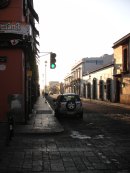
Our day of rest in Oaxaca was relaxing, the city is beautiful. There are a lot of tourists – it feels safe. There are plenty of good places to eat (We ate the best mole of our lives in the market there). But the problems of Oaxaca City aren’t easily visible. For the past couple of years, Oaxaca (State and City) has been suffering a lot from the repression of its social movements.
Queremos mencionar que Oaxaca es lugar que vió nacer a una inmigrante en los Estados Unidos: Flor Crisostomo. la segunda mujer que busca santuario en una iglesia de Chicago después de enfrentar la deportación. Y es por eso muy importante incluir en esta parte del viaje su historia. Tenemos sus propias palabras en esta resumida autobiografía:

We would like to mention that Oaxaca is the home state of an immigrant in the US: Flor Crisostomo, the second women that is seeking sanctuary in a church in Chicago after facing deportation orders. Thus, we decided it was very important to include a bit of her history. Here, we have an autobiography, written in her very own words…
Mi nombre es Flor Crisostomo, nací en Ocotlan de Mórelos, Oaxaca tengo 28 años de edad, vivo en los Estados Unidos hace 7 años, soy madre soltera de tres niños.
My name is Flor Crisóstomo, I was born in Ocotlan de Morelos, Oaxaca. I am 28 years old and I have lived in the United States for seven years. I am a single mom of three children.
Soy indígena Zapoteca; mi familia en su mayoría viven de forma tradicional, de lo que produce el campo y de las artesanías tradicionales que elaboran a mano. Mi padre es de origen indígena de Oaxaca y mi madre es de Guerrero, México. Nosotros llegamos a Guerrero a inicios de 1986.
I am an indigenous women (Zapoteca); the majority of my family lives traditionally, and what we produce is from the land, we also make traditional textiles by hand. My father is originally from Oaxaca, and my mom is from Guerrero, Mexico. We moved to Guerrero at the beginning of 1986.
La carretera nacional MEXICO – ACAPULCO. The national highway MEXICO – ACAPULCO.
Vivimos a la orilla de la carretera. El lugar se prestaba para poder tener un negocio, transitaban miles de transportistas cada día por ese camino, transitaban turistas de diferentes partes del país. Teníamos suficiente trabajo allí; en ese tiempo era la única vía para poder llegar a diferentes lugares turísticos del país, sobre todo las zonas de las playas.
We lived on the side of the highway. It was the perfect place to start a business as it allowed for the transportation of thousands of goods as well as tourists traveling to different parts of the country. We had sufficient work there; in those times it was the only way for tourists to get to the beaches.
De 1987 a 1992 teníamos suficiente trabajo para sacar adelante a nuestras familias. El presidente de México Carlos Salinas De Gortari en Junio de 1991 inicia la negociación de ( NAFTA). El 1 de Enero de 1994 firma el tratado.
From 1987 – 1992 we had enough work for our familias to get ahead. The Mexican president Carlos Salinas De Gortari started negotiations en 1991 for NAFTA. The 1st of January he signed the treaty.
Siendo muy joven me case, en Marzo 26 de 1994 nació mi primer hijo.
Being very young, I married. On March 26, 1994 and my first son was born.
Anteriormente México sufría la crisis de la devaluación de la moneda frente al dólar, de 3.26 $/Dlr. – 3.46 $/Dlr. En este momento el dólar tiene el precio mas alto de la historia de México 10.06 $/Dlr.
Early on, Mexico suffered an economic crisis which devalued the peso in relation to the dollar. It went from 3.26 pesos/1 dollar to 3.46 pesos/1 dollar. Currently, the peso is at it’s lowest point in the history of Mexico: 10.06 pesos/1 dollar.
El primero de Enero de 1994, también surgían los levantamientos de grupos armados en protesta de las acciones de ambos gobiernos; este levantamiento esta hasta el momento compuesto en su mayoría por indígenas, campesinos y familias enteras que sabían que se acercaba lo peor.
The 1st of January 1994, the armed resistance groups protested these actions (NAFTA) on the part of both governments. This uprising even today is composed of mainly indigenous, campesinos that knew the worst was coming.
A fines de 1994 y mediados de 1995, los campos cada día eran los mas perjudicados y cientos de familias se veían en la necesidad de emigrar a las ciudades o hacia otro país.
At the end of 1994 and halfway through 1995, the rural communities were the most affected and hundreds of families saw the need to immigrate to the cities or to another country.
Nació la autopista de sol México-Acapulco y con ella murió el futuro de negociantes y campesinos. También revivo más la corrupción.
The highway El Sol from Mexico to Acapulco was born and with that came the destruction of small businesses and campesinos. Corruption came alive.
En 1996 nació mi segundo hijo. En Enero de 1998 nació mi tercera niña.
In 1996 my second son was born. In January of 1998 my third child was born (a girl).
Para ese tiempo el negocio de mi madre y el de miles de personas se encontraban en la ruina total. Logramos vivir, (sobreviviendo) durante 3 o 4 años mas, tal lucha fue imposible. Mis hermanos vieron muertas sus esperanzas de poder sacar su carrera adelante; y en el transcurso del ano 2000, nos vimos obligados en menos de un año a salir de nuestro pueblo, de nuestro país y abandonar a nuestras familias.
These times brought total ruin to my mother’s business and that of thousands of others. We survived for three or four years, but such a struggle was impossible to maintain. My brothers’ hopes of developing their careers died. During the year 2000, we felt obligated to leave our town, our country and abandon our families.
Inclusive del año 1998 hasta ahora, se han visto números mas grandes de migración hacia los EE.UU. Cave mencionar que cada familia de ese pueblo tiene aproximadamente de 6 a 8 miembros en Chicago trabajando mandando millones de dólares en remesas para sostener a nuestras familias.
From 1998 to now, the numbers of those migrating to the Status has grown. It is important to mention that each family of my town has approximately 6 – 8 members living and working in Chicago who are sending millions of dollars home in remesas in order to sustain our families.
NAFTA trajo consigo destrucción de trabajo y destrucción de familias; cada día es difícil ver como los pueblos se quedan desiertos, cada día hay mas pobreza y necesidad, cada día hay mas niños que se quedan sin su padre o su madre o inclusive sin los dos, al cuidado de la abuela; por que sus padres emigran para poder enviarles lo necesario.
NAFTA brought with it the collapse of employment and the destruction of families. It is difficult to see every day the towns that are deserted. Each day there is more and more poverty and need, each day there are more children living without a mom or a dad or both…being cared for by a grandparent; so that their parents could immigrate and be able to send them what they need.
Nuestros gobiernos no tienen ningún interés en arreglar tal crisis; para el gobierno de los EE.UU. se le hace más cómodo que sigamos teniendo un gobierno corrupto.
Our governments do not have any interest in fixing this problem; it is more convenient for the US government that our government continues being corrupt.
Al gobierno de los EE.UU no le importa violar tratados internacionales, derechos humanos, derechos constitucinales y sobre todo los “principios” en los que han fundado su nacion, los valores que pregonan y que le ensenan a su propio pueblo, las propias leyes que ellos mismos han creado.
To the US government, it doesn’t matter that they violate international agreements, human rights, constitutional rights and above all the “principles” upon which their country was founded…the values they promote and teach to their own people, their own laws that they themselves have created. Desde Oaxaca, fuimos a Puebla brevemente y luego a Tlaxcala y Apizaco.
From Oaxaca, we went briefly through Puebla and then headed on to Tlaxcala and Apizaco.
Todos los trenes del sur de México se juntan en el pueblo de Apizaco. Pasamos solo una mañana allí, filmando y sacando fotos. Conocimos a un grupo de hondureños que vinieron a Apizaco pero decidieron regresar a su patria. Los encontramos al lado de los rieles, inhalando pegamento para quitar el hambre.
All of the trains from Southern Mexico meet at a switching yard in Apizaco. We spent a morning there, getting shots of the trains and such. We met a small group of men from Honduras who come all the way to Apizaco but decided to head back home. We found them next to the tracks, inhaling glue to keep their hunger at bay.
En Tlaxcala, conocimos a unos miembros de la organización colectiva UNUC (Unión Nacional Urbana y Campesina). Andan trabajando en una gran variedad de proyectos, todos se tratan de solidaridad – representando a los obreros y los oprimidos. El día que estuvimos allí , había una reunión de los ex-braceros. (El programa de los Braceros fue un tratado entre México y los Estados Unidos durante los años 1940 – 1960. Su propositito fue suplir trabajadores durante la temporada de la segunda guerra mundial. Hoy se juntan para reclamar el 10% de las ganancias que nunca les pago el gobierno de los Estados Unidos). Les hablamos de nuestro proyecto y nos dieron su apoyo vocal y un aplauso cuando salimos. Otro ejemplo de cómo la gente en resistencia aprende entre si mismos sobre las luchas e inspiran a otros.
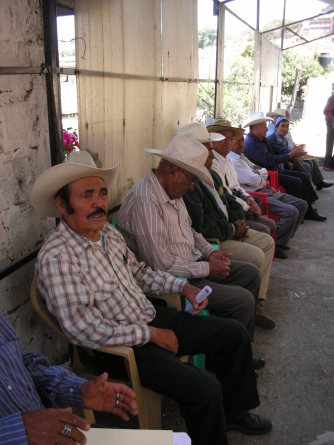
In Tlaxcala, we met members of the collectively run organization, UNUC (Union Nacional Urbana y Campesina). They are working on a wide range of projects, all based in solidarity – representing the workers and the oppressed. The day we were there, an organization of ex-braceros was holding a meeting. (The Braceros program was a guest-worker program/agreement between the US and Mexico between the 40s and 60s. Its main purpose was to supply workers for wartime production during WWII. Today, they meet to work on retrieving the 10% of their wages that they were never paid). We spoke to them about our project and they gave us their vocal support and applause on the way out. Yet another example of how people in resistance learn more from each other’s struggles and inspire one another.
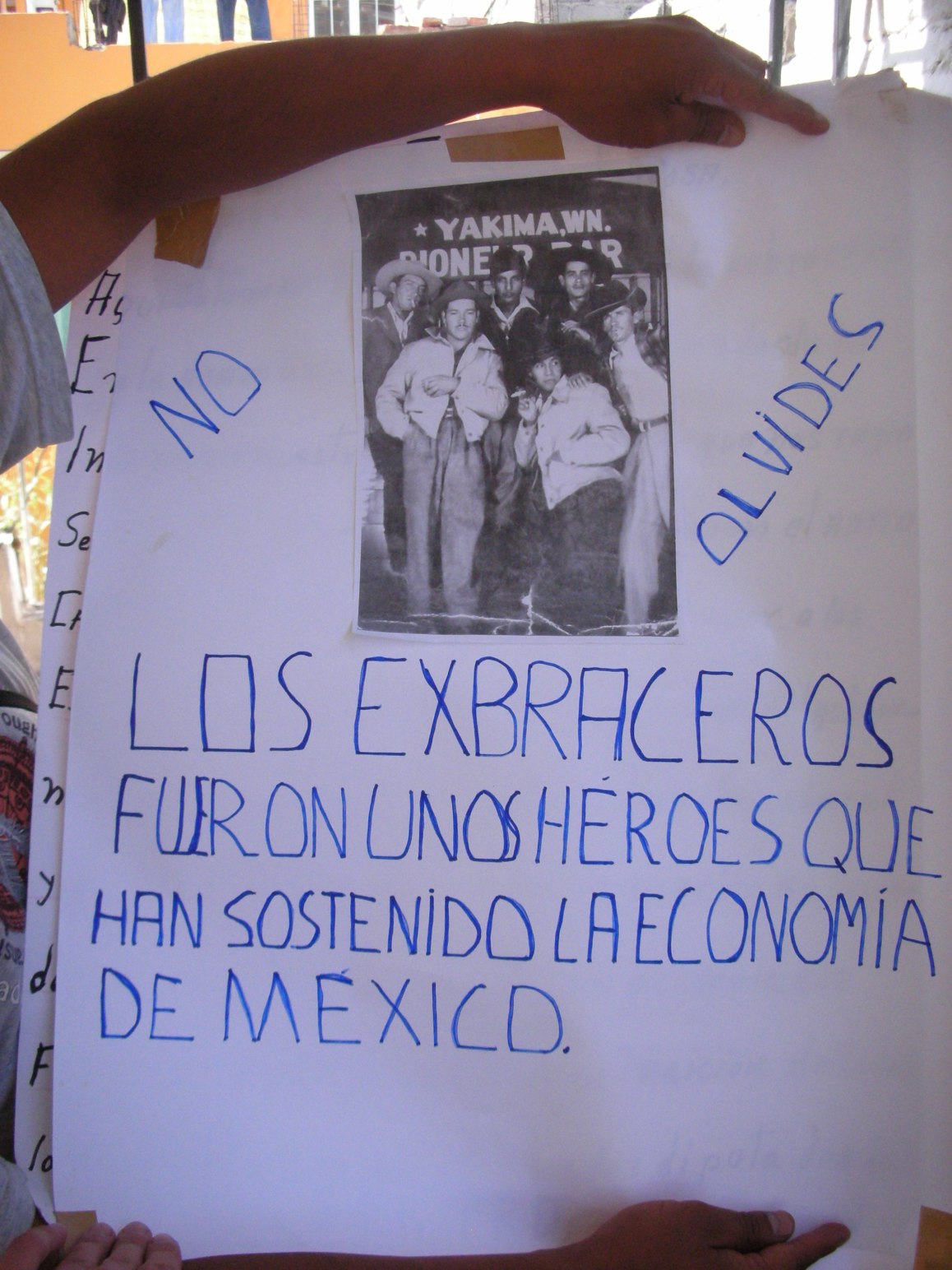
Desde Tlaxcala, nos recomendaron que fuéramos y habláramos con otra organización allí en Apizaco otra vez. Llegamos al lugar donde se reúne el grupo UPADI (Unión Popular Apiquense Democrática e Independiente) y miramos el proceso democrático pasando enfrente de nosotros. Anduvieron revisando su constitución. Fue impresionante mirar. Después de una hora y media, les dimos nuestro pequeño informe sobre el documental, nuestros deseos de trabajar por los derechos de los migrantes y emigrantes, y como todo se relaciona a la globalización. Nos escucharon y luego decidieron apoyarnos económicamente además de proveernos de una habitación en la casa de unos de sus miembros. El día siguiente, usamos un poco del dinero que nos dimos (271 pesos) para quemar y entregarles copias de unos documentales sobre la migración.
From Tlaxcala, they recommended we go and talk to another organization back in Apizaco. We arrived at the meeting hall of UPADI (Union Popular Apiquense Democratica e Independiente) and watched first hand their democratic process taking place. They were working on a sort of constitution of theirs. It was impressive to watch. After an hour or two, we gave our presentation; explaining the documentary, our desire to work for migrant/immigrant rights, and how it all relates to globalization. They listened to us, and afterwards decided they wanted to support us economically as well as provide us with a place to stay for the night. The following day, we used some of the money they gave us (271 pesos) to burn copies of some documentaries on migration and gave them back to the organizations. De Tlaxcala fuimos a Maravatio, Michoacán – el hogar especial de una de las más importantes líderes del movimiento inmigrante. Por favor de visitar nuestro blog en unos días para ver las 48 HORAS EN LA SANCTUARIO MEXICANO DE ELVIRA ARRELLANO…un punto central de nuestro viaje.
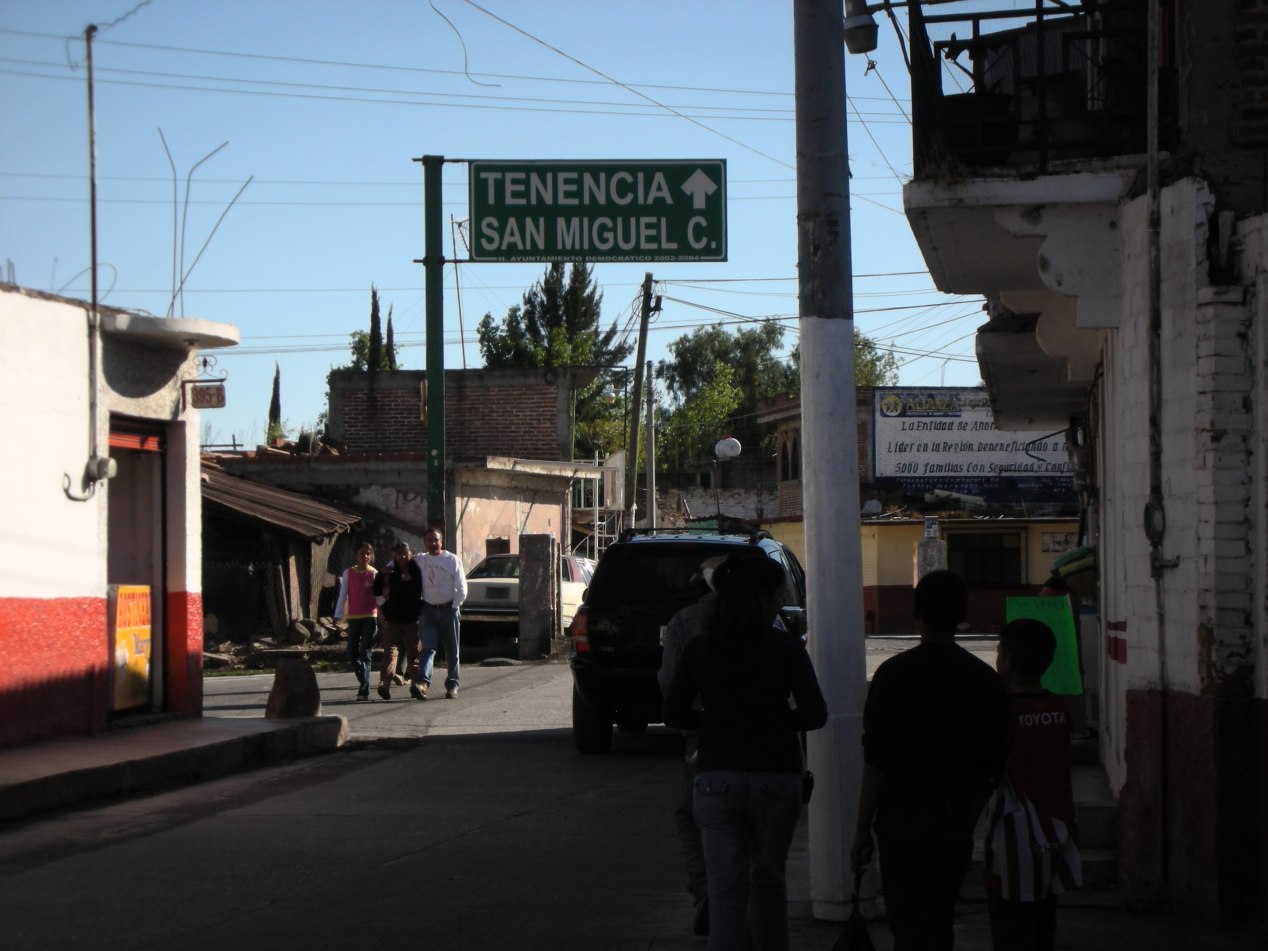
From Tlaxcala we went to Maravatio, Michoacan – the very special home of an important leader in the immigration movement. Please check back on our next blog entry for details of the 48 hours we spent in the sanctuary of Elvira Arrellano…a highlight of our trip. En Resumen/Closing Thoughts
Mientras estabamos en Apizaco, hablamos por un rato con una mujer de la oficina de los derechos humanos. Nos contó una historia muy triste. Había un grupo de migrantes que estaban cruzando la frontera en una Trailer. Una de las mujeres tuvo su bebe recien nacido. Al momento que iban a pasar por la aduana, el bebe de la mujer empezó a llorar. Obviamente, esto hubiera terminado con su oportunidad de pasar sin ser detectados por la migra. La mujer trato de callar al bebe pero el bebe estaba inquieta, quería aire. Los otros migrantes le dijeron, “Por favor…hemos llegado tan lejos hasta aquí en la frontera y no queremos que tu hijo les avise a la migra que estamos aquí. Tienes que callarlo.” La mujer cubrio la boca de su hijo. Pasaron sin notarles la migra pero supieron después que se había muerto el hijo de sofocación.
While we were in Apizaco, we met briefly with a woman at the Human Rights office. She told us a sad story about a border crossing. There was a group of migrants crossing the border in the back of a semi. One of the women was traveling with her new-born baby. At the moment that the semi arrived at customs, the women’s baby began to cry. Obviously, this could have completely ruined their chances of making it through unnoticed. The women tried to comfort her baby, stop him from crying. But the child was not comfortable, he wanted air. The other migrants told the women, “Please…we have made it this far and we don’t want your child to give us away now. You must stop him from crying.” The women covered her baby’s mouth to muffle the sound. They made it through without being noticed, but found out minutes later that the baby had died of suffocation. Historias como estas – de sufrimiento intolerable y perdida de la familia – son solo un tipo de las luchas que los migrantes enfrentan día a día. Migrantes que andan simplemente buscando trabajo, para que puedan apoyar a su familia, para que puedan comer, para que puedan construir una vida mejor para sus hijos.
Stories like this – of severe suffering and loss of family – are but one kind of the everyday struggles that migrants encounter. Migrants who are simply in search of work so they can support a family, so they can eat, so they can build a better life for their children. Antes de que alguien verdaderamente ingrese a la lucha de los migrantes e inmigrantes, antes de que podamos hacer cambios a niveles comunitarios, nacionales, y globales…tenemos que entender las causas – las motivaciones políticas capitalistas. Pero aun antes que podamos entender las causas y las situaciones políticas, tenemos que ESCUCHAR LAS HISTORIAS DEL PUEBLO. Nuestros corazones tienen que tocar el dolor y las luchas de nuestros hermanos y hermanas. Solamente se puede trabajar para un cambio después de haber sentido lo que hay por cambiar.
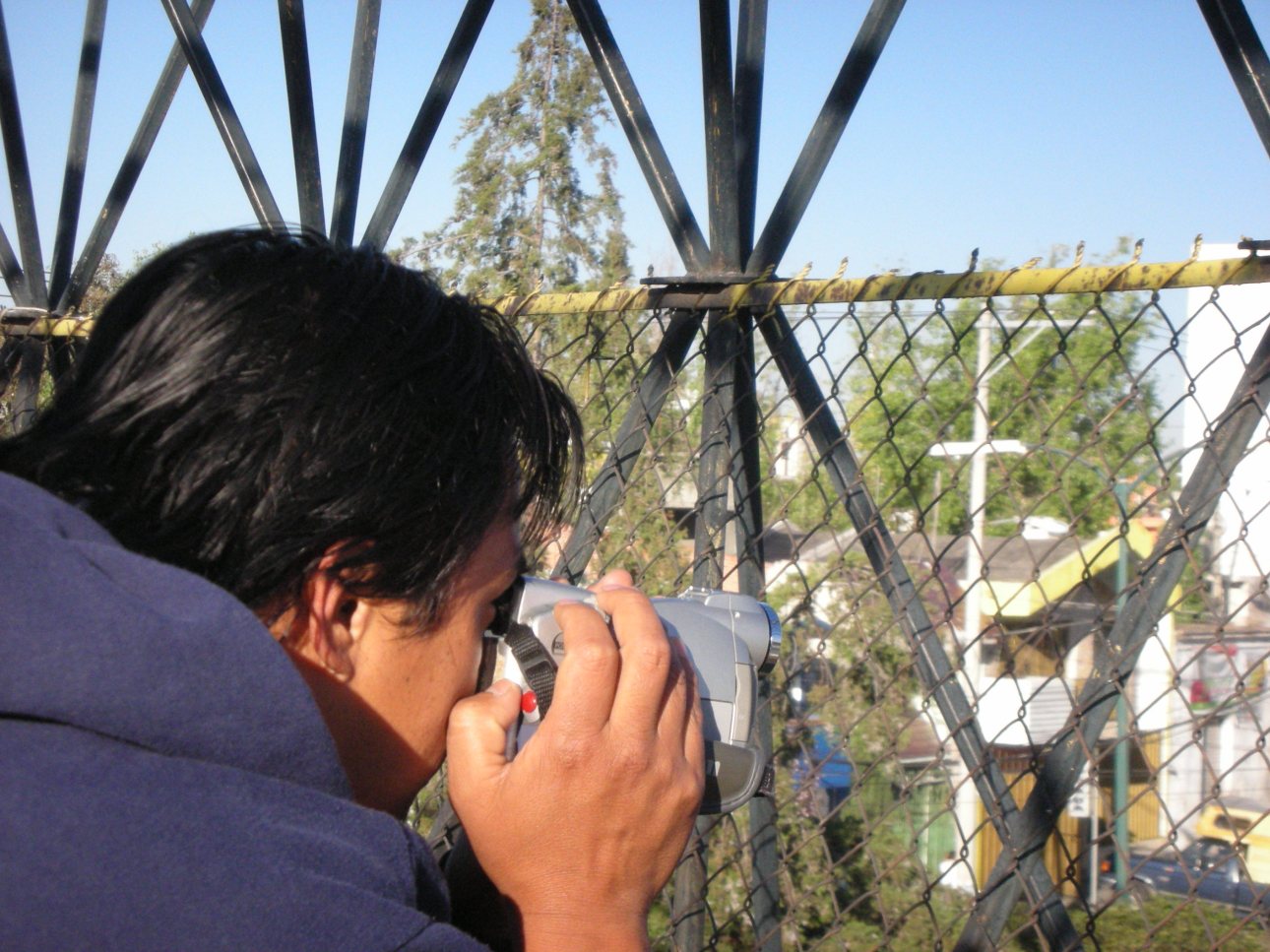
Before one can really involve themself in the struggle for immigrant rights, before we can commit ourselves to making change on community, national, and global levels…we must understand the causes – the political and capitalist motivations. But even before we can understand the causes and the political situations that are perpetuating these problems, we must HEAR THE STORIES OF THE PEOPLE. Our hearts must take in and feel the pains and struggles of our brothers and sisters. One can only truly work for change after they have felt what it is that needs to be changed.
